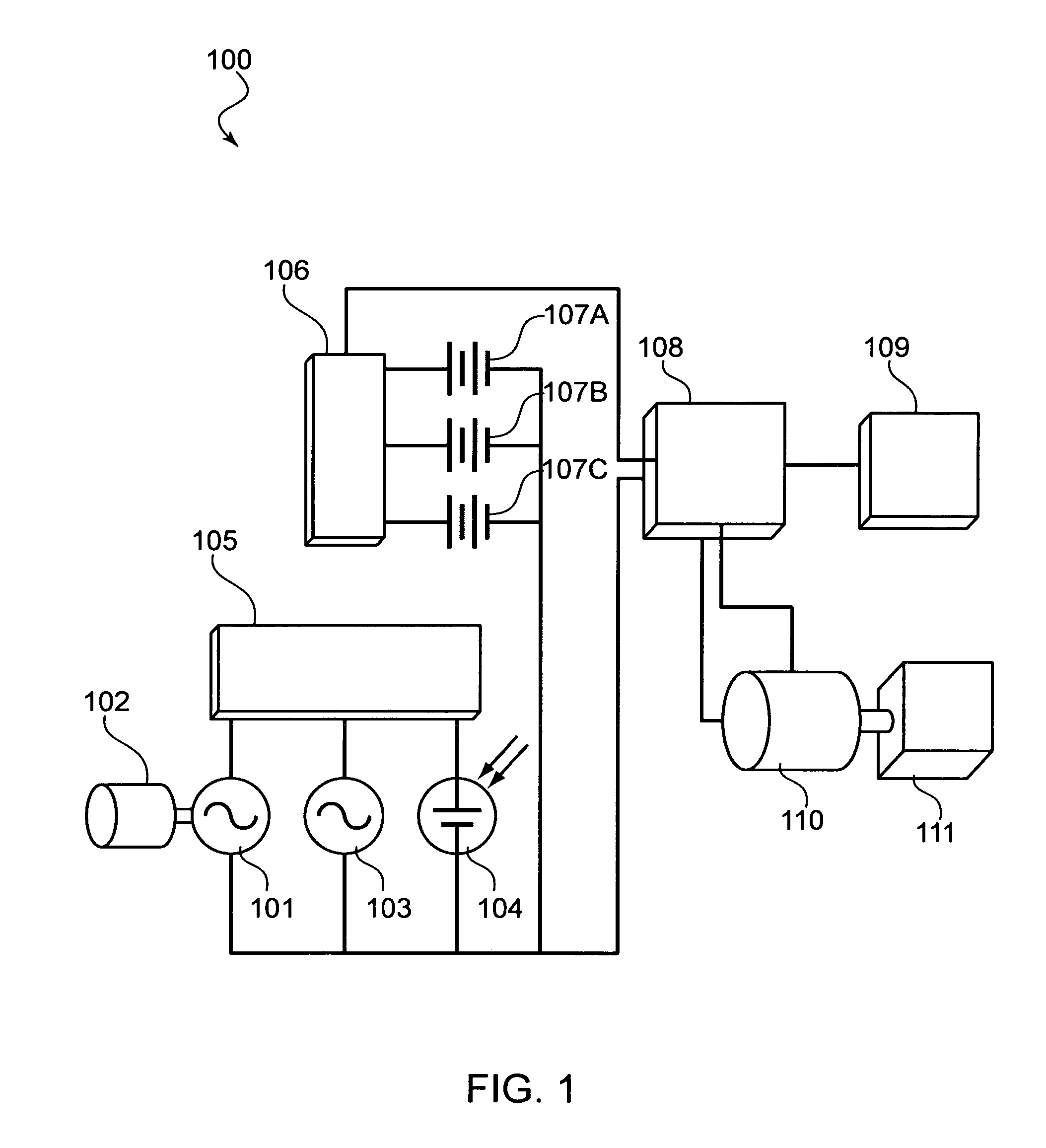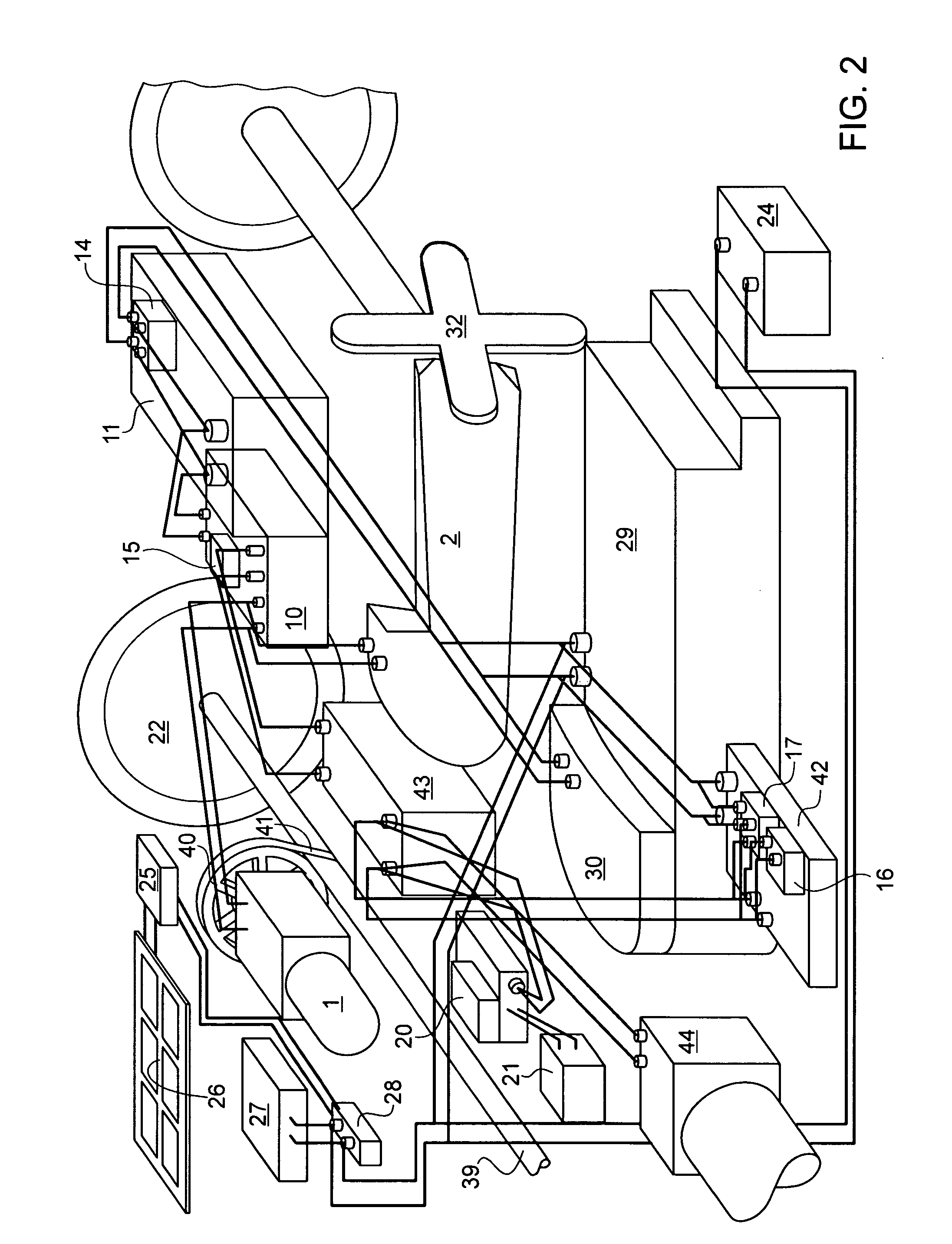Power system for electric and hybrid vehicles
a technology for electric and hybrid vehicles, applied in the direction of wind turbines with solar radiation, machines/engines, propulsion parts, etc., can solve the problems of high cost of petroleum products, low mileage gain achieved by such hybrid vehicles, and insufficient reduction of petroleum consumption of supplementing combustion engine power with electric engine power
- Summary
- Abstract
- Description
- Claims
- Application Information
AI Technical Summary
Benefits of technology
Problems solved by technology
Method used
Image
Examples
Embodiment Construction
[0023]Referring now to the Figures, where like numbers indicate like features, the illustration of FIG. 1 depicts a block diagram illustrating an exemplary layout and interconnectivity of devices comprising a power system for electric and hybrid vehicles 100 (hereinafter, power system).
[0024]The power system 100 may include a power generating device 101 such as, but not limited to, an alternator or electrical generator connectively attached to an auxiliary internal combustion motor 102. In one exemplary embodiment, the auxiliary motor may be a small internal combustion motor left in an idle or stopped state until needed to drive the power generating device. In a particularly useful embodiment, the auxiliary motor 102 may be started and used to drive the power generating device 101 to generate power sufficient to charge any batteries (107A-C) disposed within the power system 100, allowing a driver to continue use of a vehicle within which the power system 100 is disposed.
[0025]The po...
PUM
 Login to View More
Login to View More Abstract
Description
Claims
Application Information
 Login to View More
Login to View More - R&D
- Intellectual Property
- Life Sciences
- Materials
- Tech Scout
- Unparalleled Data Quality
- Higher Quality Content
- 60% Fewer Hallucinations
Browse by: Latest US Patents, China's latest patents, Technical Efficacy Thesaurus, Application Domain, Technology Topic, Popular Technical Reports.
© 2025 PatSnap. All rights reserved.Legal|Privacy policy|Modern Slavery Act Transparency Statement|Sitemap|About US| Contact US: help@patsnap.com



